CROATIA
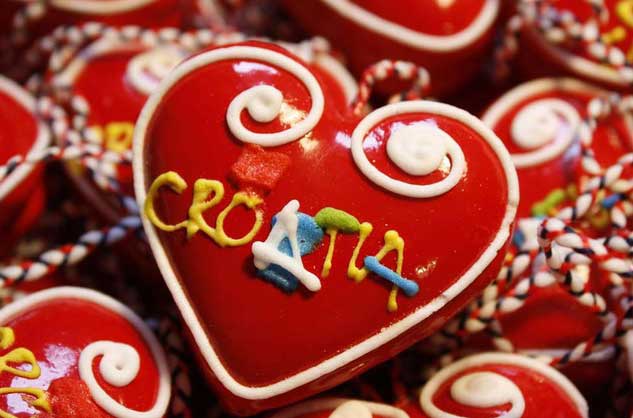
CROATIA, FULL OF LIFE
With its magnificent coastline, 1,185 islands, islets and reefs, Roman ruins and picturesque medieval villages, it is fast becoming a rival to the magical Greek islands
Its long Adriatic coastline forms the western leg, tapering to the unique ancient seaport of Dubrovnik in the south, while the land between the rivers Drava and Sava form the northern section. The capital, Zagreb, sits in-between.
The most prominent feature of Croatia's tourist industry is its Dalmatian coastline, which is indented with rocky cliffs, peninsulas and small inlets. There is a special atmosphere to Croatian towns and villages, many of which are built on the sites of ancient Greek settlements dating from the 4th century BC.
Mediterranean climate, scenic beauty and lush vegetation, is aiding Croatia's rise into one of the world's tourist hotspots.
Please check following link.
BEACHES
CULTURE AND HERITAGE
Welcome to Croatia! A land whose rich cultural heritage is not discovered only from within the walls of numerous museums, galleries and churches, many of which today, as zero category monuments, are included in a part of the UNESCO World Heritage List, but much more in that magical place on the Mediterranean, where even the shortest stroll becomes a journey down a staircase thousands of years old which takes one through a history that is at the same time turbulent, exciting and glorious. Whether walking the intricate grid of narrow white stone streets and alleys, or revelling in the teeming life of the port towns of Istria, Kvarner or Dalmatia, or climbing the green serpentines of Central Croatia to the fairy-like fortresses and castles, each step is an ever fresh experience, made special by the fact that on her territory as many as four cultural circles meet, intertwine and complement one another - west, east, Central European and the southern spirit of the Mediterranean. Croatia is a land of urban culture which numbers more cities than any other part of the Mediterranean.
If you are interested in the days of antiquity, you should start from the Roman amphitheatre in Pula, through Zadar and its forum - the largest excavated forum on the eastern shores of the Adriatic - and then to the magnificent palace of Emperor Diocletian in Split. Walk through time, from the pre-Romanesque Church of St. Domnius in Zadar dating from the 9th century, to the world of the Romanesque that is the magical monument city of Trogir, or the islands of Krk and Rab. Follow the Gothic period in Zagreb, Pazin, or, for instance, the town of Ston on the Pelješac peninsula. Discover the Renaissance in Osor on the island of Cres, Šibenik cathedral, the islands of Hvar and Korčula, and finally, the one and only Dubrovnik. The towns of Varaždin, Bjelovar and Vukovar glow with the splendour of the Baroque, while the heritage of the 19th century is at its best in Rijeka, Osijek and, of course, in downtown Zagreb.
Dalmatia

Dubrovnik
Dubrovnik is a stunningly intact walled city on the Adriatic Sea coast of the extreme south of Croatia. Although its population barely exceeds 40,000, it's one of the most prominent tourist resorts of the Mediterranean and listed as a UNESCO World Heritage Site since 1979.
Dubrovnik is both a seaport and the centre of the Dubrovnik-Neretva County. Its population was 42,615 inhabitants according to census data from 2011. Dubrovnik is nicknamed "Pearl of the Adriatic". Tourism is the most important industry in Dubrovnik so according to data from 2012, there were 45 hotels:- twelve 5* hotels, nine 4* hotels, twenty two 3* hotels and two 2* hotels.
The city of Dubrovnik (Latin: Ragusa) was built on maritime trade. In the Middle Ages it became the only city-state in the Adriatic to rival Venice. Supported by its wealth and skilled diplomacy, the city achieved a remarkable level of development during the 15th and 16th centuries. Furthermore, Dubrovnik was one of the centres of the development of the Croatian language and literature, home to many notable poets, playwrights, painters, mathematicians, physicists and other scholars.
Today Dubrovnik is the proudest feather in Croatia's tourist cap, an elite destination and one of the most beautiful towns in the Mediterranean. Dubrovnik used to be an independent republic, surviving mostly on trade. It managed to survive many centuries, with constant threats to its territory, particularly from the mighty Ottoman Empire and Venice. As early as 19th century, it was discovered by celebrities as a place to be seen. George Bernard Shaw once said that "those who seek paradise on Earth should come to Dubrovnik and find it". Royalty, presidents and diplomats have all favoured the city. The late Pope John Paul II was a fan of Dubrovnik and was even made an honorary citizen. Out of the 23 top luxury hotels in Croatia in 2010, a dozen were located in Dubrovnik.Dubrovnik is steeped in stunning architecture and sculptural detail, and boasts spectacular churches, monasteries, museums, and fountains. A multitude of typical towns and excursions include: The Elaphiti Islands, the attractive town of Cavtat,the Konavle valley, Mljet Island, Korčula Island, Ston and Peljesac Peninsula.
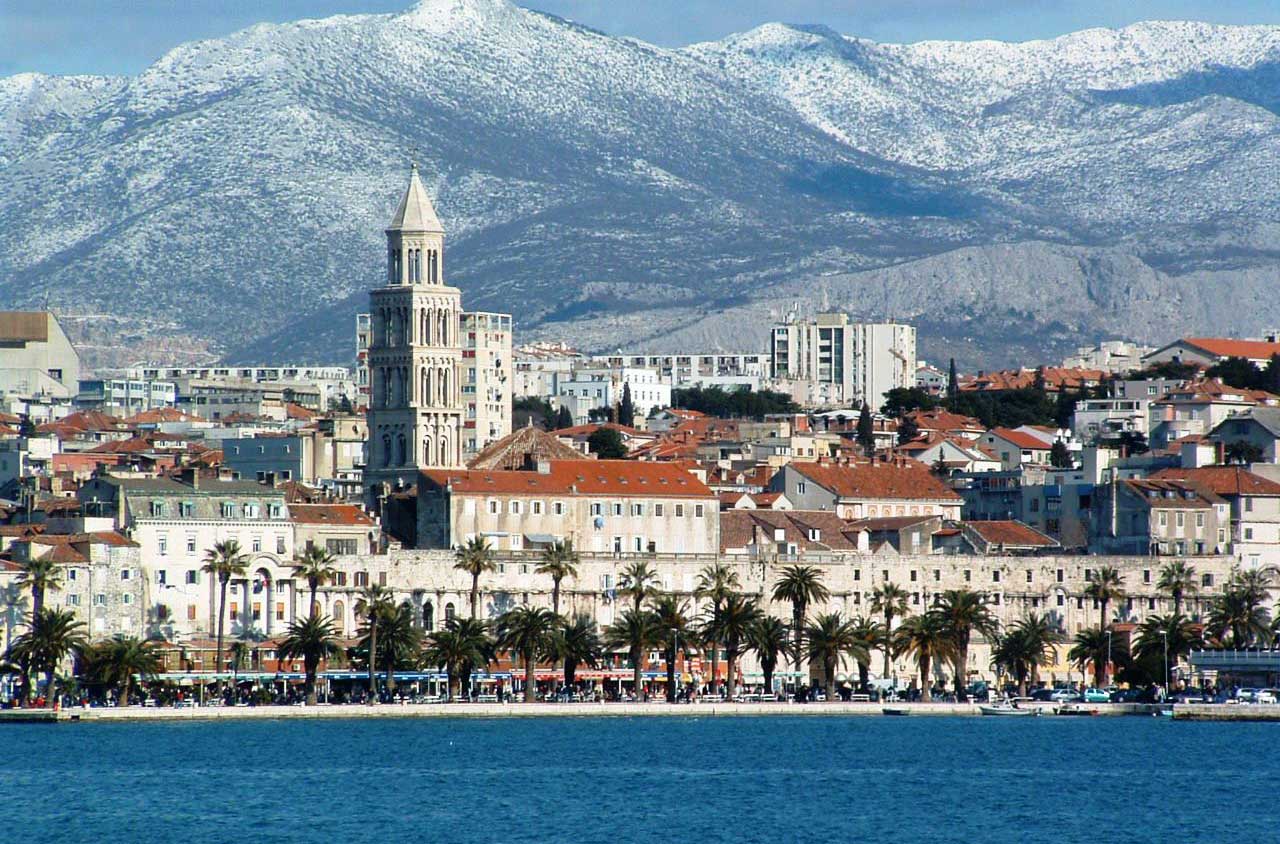
Split
The second-largest city in Croatia, Split (Spalato in Italian) is a great place to see Dalmatian life as it’s really lived. Always buzzing, this exuberant city has just the right balance of tradition and modernity. Step inside Diocletian’s Palace (a Unesco World Heritage site and one of the world’s most impressive Roman monuments) and you’ll see dozens of bars, restaurants and shops thriving amid the atmospheric old walls where Split life has been going on for thousands of years. To top it off, Split has a unique setting. Its dramatic coastal mountains act as the perfect backdrop to the turquoise waters of the Adriatic. You’ll get a chance to appreciate this gorgeous cityscape when making a ferry journey to or from the city.
Split is often seen mainly as a transport hub to the hip nearby islands (which, indeed, it is), but the city has been sprucing itself up and attracting attention by renovating the old Riva (seafront) and replacing the former cement strolling ground with a marble look. Even though the modern transformation hasn’t pleased all the locals, the Riva is a beauty.
national Parks
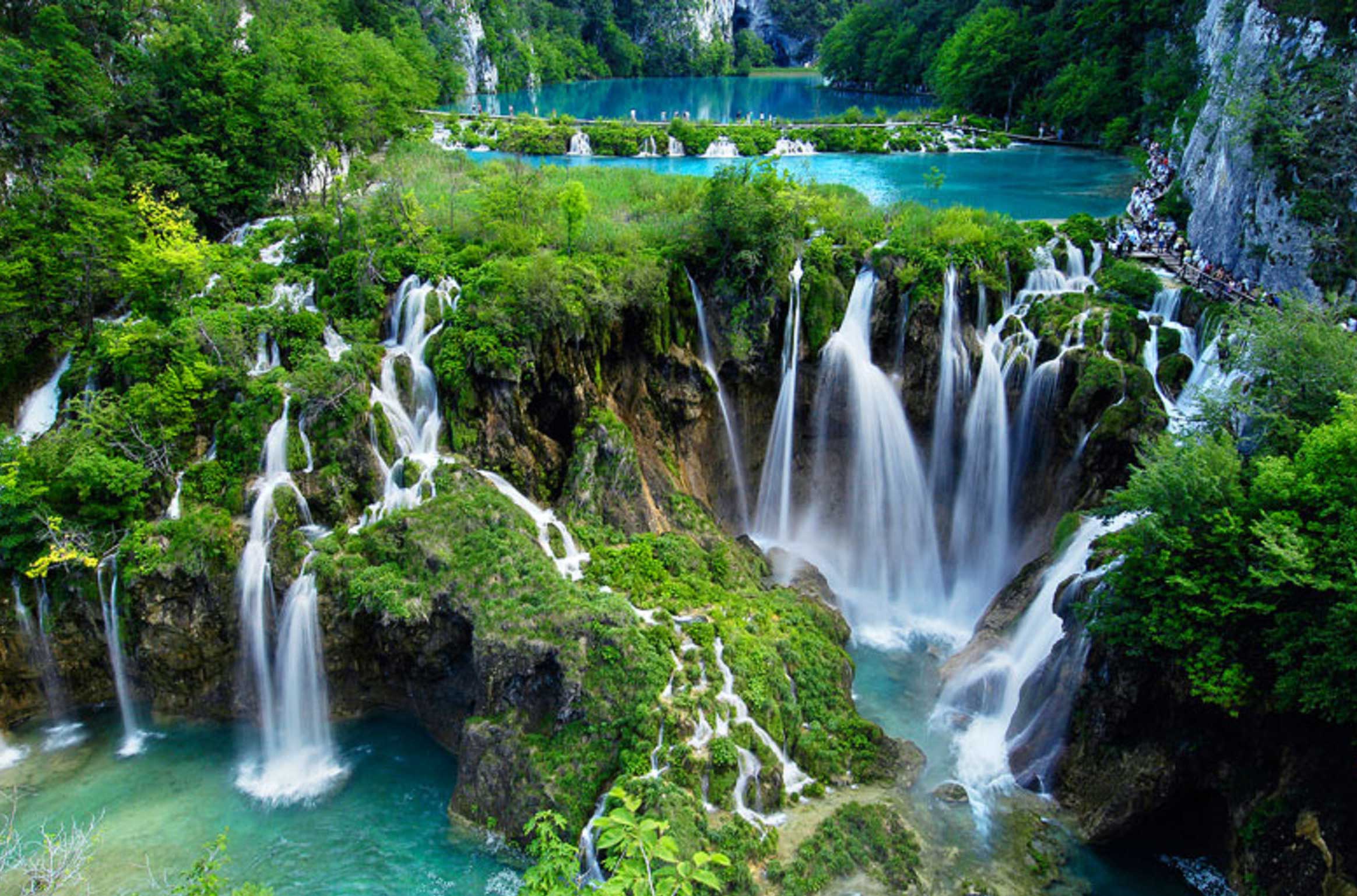
Plitvice Lakes National Park
Plitvice National Park in Croatia is considered to be one of the most beautiful natural sights in Europe. Due to its natural beauty and significance, this system of 16 interlinked lakes and a large forest complex around it were set aside as a national park in 1949. In 1979 the park was inscribed on the UNESCO World Heritage List.
The lakes are situated on the eponymous Plitvice plateau, between the mountains of Lička Plješevica (Gornja Plješevica peak 1,640 m), Mala Kapela (Seliški Vrh peak at 1,280 m) and Medveđak (884 m). The sixteen lakes are separated into an upper and lower cluster formed by runoff from the mountains, descending from an altitude of 636 m to 503 m over a distance of some eight km, aligned in a south-north direction. The lakes collectively cover an area of about two km², with the water exiting from the lowest lake to form the Korana River.
The Plitvice Lakes lie in a basin of karstic rock, mainly dolomite and limestone, which has given rise to their most distinctive feature. The lakes are separated by natural dams of travertine, which is deposited by the action of moss, algae and bacteria. The encrusted plants and bacteria accumulate on top of each other, forming travertine barriers which grow at the rate of about 1 cm per year.
The lakes are renowned for their distinctive colours, ranging from azure to green, grey or blue. The colours change constantly depending on the quantity of minerals or organisms in the water and the angle of sunlight.
The lakes are divided into the 12 Upper Lakes (Gornja jezera) and the four Lower Lakes.
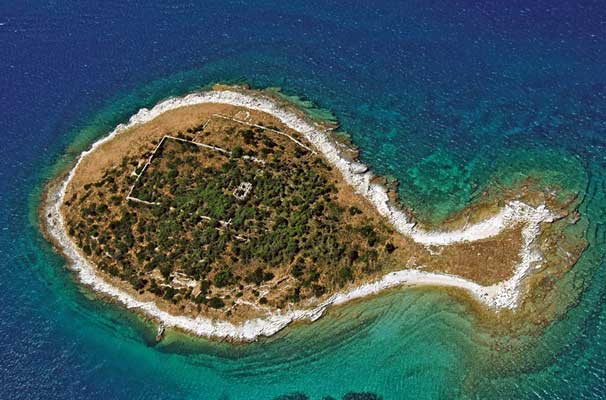
Brijuni National Park
The other islands are Vanga, Sveti Marko, Gaz, Obiljak, Supin, Galija, Grunj, Pusti, Vrsar, Jerolim and Kotez.
History
One of the reasons to visit the Brijuni islands is its connection with antiquity. The islands were inhabited in the neolithic era, and then fell under Roman rule in 177AD. Upon the collapse of the Roman Empire, the islands first were ruled by the Ostrogoths and then came within the Byzantine Empire until 776AD. The Franks and the Aquilean patriarchs were the next rulers and in 1331 fell under the rule of the Venetian Empire. They were allowed to deteriorate into malarial swamps until the late 19th century when the were purchased by an industrialist and turned into a swanky resort. It was at this point that the hotels on Veli Brijuni were built, waterworks were built and the island was groomed for swimming and strolling. After WWII, the Brijuni islands became the summer residence of Marshal Tito.
Flora and Fauna
Veli Brijuni is an extremely well-manicured park. The native Mediterranean plants and trees have been supplemented with imported species such as stone pine, pine, cedar, sequoia, eucalyptus and bamboo. When Tito was in residence during the summer he invited high-profile celebrities and politicians to come visit. Many brought exotic animals as gifts (!) who were then housed in a fenced-in portion of the island.
Visiting the Brijuni Islands National Park
If you stay in a hotel on Veliki Brijun, you have the run of the island. There are no cars but you can easily rent a bike or a golf cart to tool around.
Otherwise, the best way is to arrange an excursion through the Brijuni National Park service, based in Fazana. You can reserve by telephone but you should do it at least a day in advance. Your visit includes the services of an English-speaking guide and a mini-train to take you around. The price depends on the season but note that you pay the same price whether or not you take the tour.
There are a number of daily boats back and forth between Fazana and the National Park. Nothing stops you from staying on after the tour and exploring on your own or lolling on the beach. In fact, it's highly advisable! The water is unbelievably clear and the fish life is abundant. It's a great place for snorkelling.
continental Croatia

Zagreb, capital city
Zagreb has culture, arts, music, architecture, gastronomy and all the other things that make a quality capital city – it's no surprise that the number of visitors has risen sharply in the last couple of years. Croatia's coastal attractions aside, Zagreb has finally been discovered as a popular city-break destination in its own right.
Visually, Zagreb is a mixture of straight-laced Austro-Hungarian architecture and rough-around-the-edges socialist structures, its character a sometimes uneasy combination of the two elements. This small metropolis is made for strolling the streets, drinking coffee in the permanently full cafes, popping into museums and galleries, and enjoying the theatres, concerts and cinema. It’s a year-round outdoor city: in spring and summer everyone scurries to Jarun Lake in the southwest to swim or sail, or dance the night away at lakeside discos, while in autumn and winter Zagrebians go skiing at Mt Medvednica (only a tram ride away) or hiking in nearby Samobor.
Castles

Croatia most stunning castles
Castles dot Croatia's landscape like so much fairytale flotsam, rising majestically to overlook valleys and towns. Though a number of these former fortresses have fallen into disrepair, many have been restored and offer visitors a chance to glimpse noble life from centuries past. Some of the castles offer straightforward tours of their interior, while others have created museums and visitor centers to bolster the experience. Still others have been converted into luxury hotels and high-end restaurants. We've combed through Croatia's interior to bring you its 5 most stunning castles.
http://www.travelchannel.com/destinations/croatia/articles/croatias-most-stunning-castles
Gastronomy
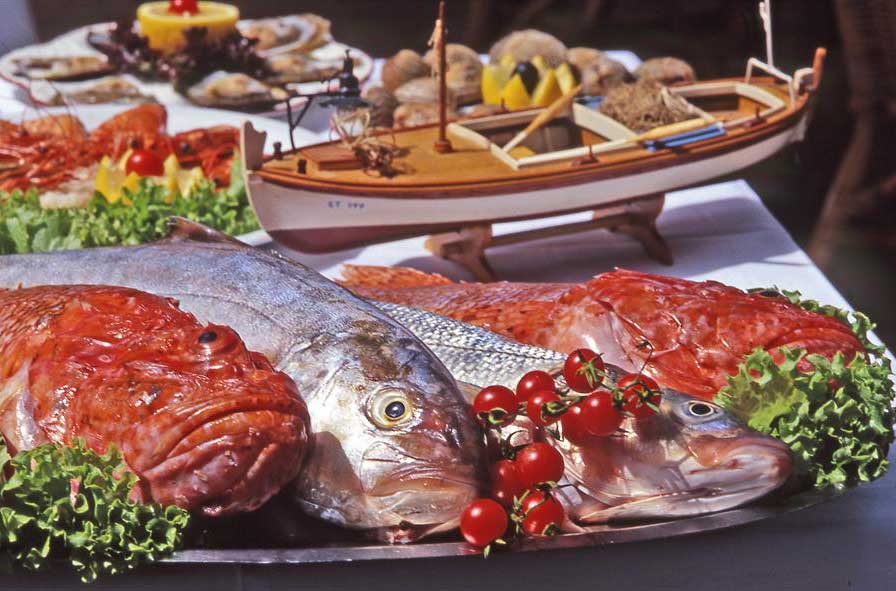
Food & Drink
In the coastal regions of Croatia the cuisine has a rather Mediterranean flavour, as you would expect, with lots of olive oil used in the preparation. However, Croatian cuisine does have its own distinct identity, especially in regards to the cooking of fish. The tradition of grilling and roasting fish and delicacies of the sea has been carried down from generation to generation, where the taste of the fish depends on the grilling technique and the type of wood chosen. There is also the tantalising Dalmatian olive oil method of cooking, gradelavanje, which gives the fish a particular and fantastic taste. All along the coast and the isles, the fish menus are unrivalled - even the humble sardine will never taste quite so delicious. Many Croatian fish restaurants have their own fishing boats, so you can be assured of the freshness of the fish. Also, it is not uncommon to choose your own fish from a selection of different species kept on ice in the centre of the restaurant.
Croatian cuisine isn’t restricted to fish, they have many delicious meat dishes too. Grilled pork and roasted lamb are common dishes, and beef too, which is often cooked in a delicious tomato sauce, although you can, of course, have your steak ‘straight’. Regional differences in Croatian cuisine are quite evident and in the north of Croatia Austro-Hungarian culinary influences are strongest. One finds meats cooked in bread crumbs, goulashes served with stuffed cabbage, and a dish called sarma, a winter delight of a rare excellence. In the region around Zagreb, strukli, thin sheets of cheese cooked in water, is a speciality. In Slavonia, the speciality is kobasice, or pork sausages. Along with the many types of delicious sausages on offer, there is the famous kulen, which is very similar to salami.
The wines and beers of Croatia
Not to be forgotten is the wine, known for its special taste of the warm south. Croatian wines were already reputable but they are becoming more and more renowned.
Among the top quality red wines are Postup, Faros, Babic, the Dingac red from the Peljesac peninsular, and the Teran wine of Istria. Among the first class whites are Posip, Grk, Bogdanusa, and the well known sweet desert wine, Prosek. Even the region’s drinking water, which flows from the rivers Jardo and Cetina, is a speciality. Thanks to its purity and pleasant taste it is considered not only to be healthy, but is also mixed with wine to create Bevenda.
The Croatian beers most frequently drunk are Ozujsko pivo and Kariovacko pivo, both of which are excellent. Foreign beers tend to be more expensive, so unless you have a preference for a particular foreign beer you’ll do no wrong choosing Croatian.
Finally you must try, before or after enjoying one of the many varied dishes from the Croatian menu, the different sorts of schnapps. ‘The water of life’, Rakija, when made from a base of plums is Slivovica, from grapes is Loza, and from herbs is Travarica.
Cheers: Zivjeli!

